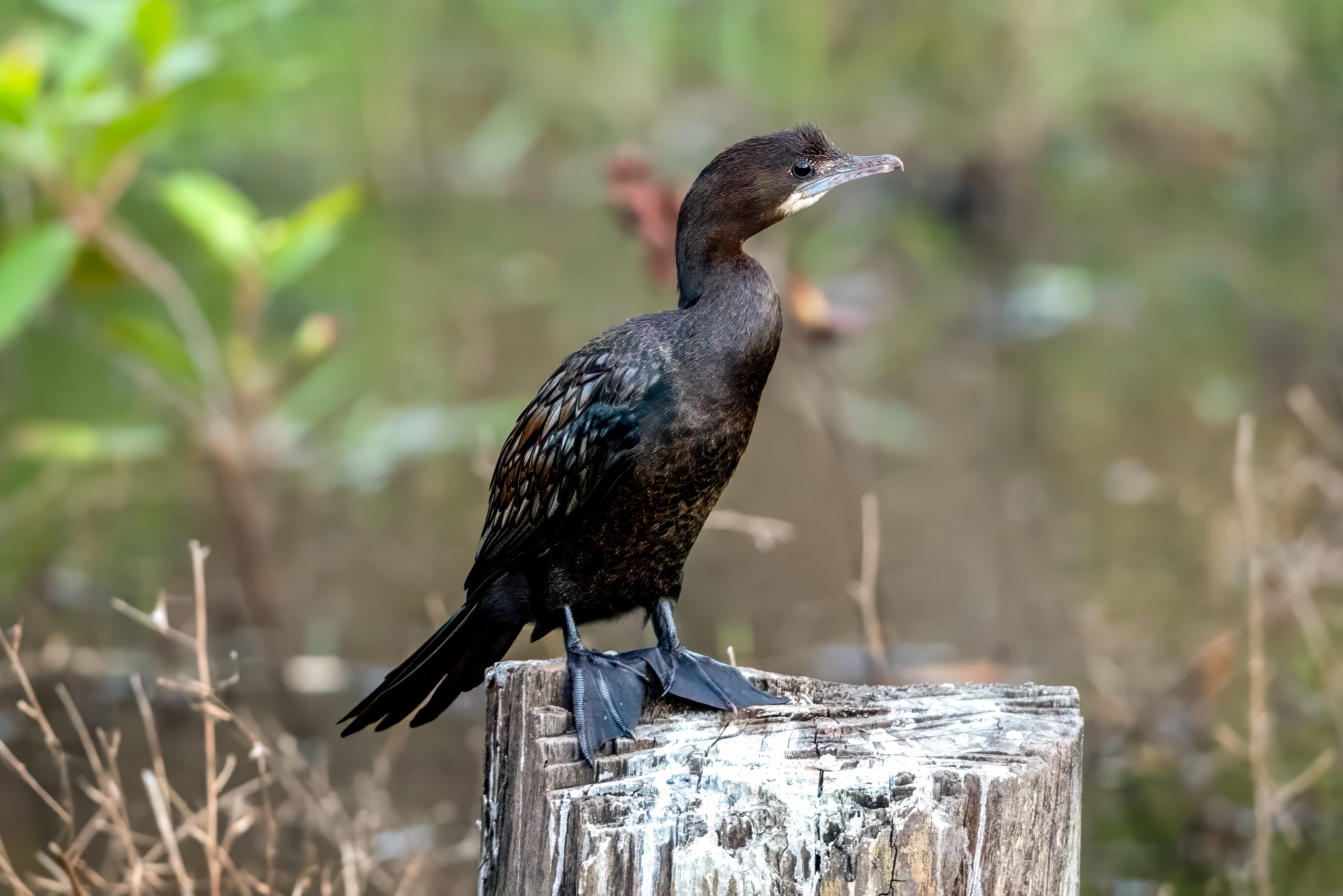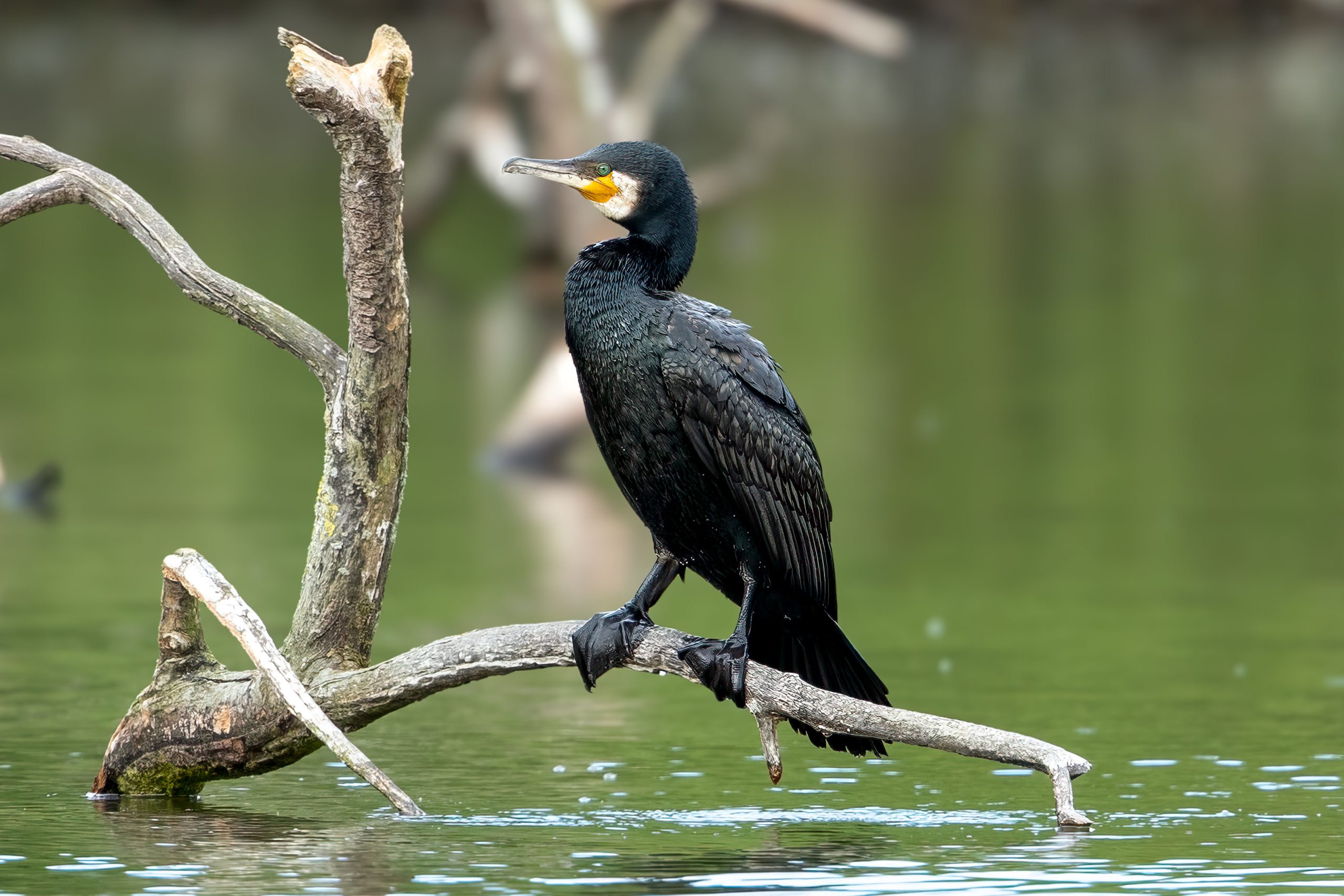Description
The long-tailed cormorant (Microcarbo africanus), also known as reed cormorant, is a relatively small species of cormorant found throughout most of sub-Saharan Africa and Madagascar. It measures about 50-55 cm in length, with a wingspan of approximately 85 cm. The bird’s most striking feature is its tail, which is longer than that of other cormorants, lending the species its name. Its plumage is predominantly glossy black with a greenish sheen, more intense during the breeding season. Juveniles display a more mottled brown appearance. This species has a shorter bill and a more rounded head compared to other cormorants, along with distinctive bright red eyes that stand out against its dark plumage.
Diet & habitat
The long-tailed cormorant primarily feeds on small fish and aquatic invertebrates, capturing its prey by diving underwater. It is primarily found by freshwater lakes, rivers, and wetlands, showcasing adaptability to various aquatic environments. The proximity to water bodies is essential for their feeding and nesting habits.
Nesting
These cormorants are often seen in groups, especially during breeding season, forming large, noisy colonies. The long-tailed cormorant typically breeds during the rainy season, although this can vary regionally. Nesting colonies are often established in trees or on cliffs near water bodies, sometimes shared with other bird species. The nests are constructed from sticks and lined with grass. They lay 2-4 eggs per clutch, with both parents sharing the responsibilities of incubation and chick-rearing. The chicks, born featherless and blind, fledge approximately 40-50 days after hatching.
Status
The long-tailed cormorant’s population is stable for now. However, they remain susceptible to environmental changes such as habitat destruction, water pollution, and fishing line entanglement, highlighting the importance of ongoing conservation efforts. It is listed as least concern on the IUCN Red List.






